Space Verdict
An impressive piece of kit, the Celestron NexStar Evolution 8's optical system ranks as one of the best we've ever had the pleasure of looking at the universe through. Operation of its WiFi technology is seamless, while the computerized GoTo mount boasts exceedingly high performance. The Celestron NexStar Evolution 8 can be pushed to its useful magnification of 480x without suffering the consequences of poor, blurred images.
Pros
- +
No visual defects such as colour fringing, warping or coma
- +
Excellent, clear views of deep-sky and solar system targets
- +
Easy to set up and align
- +
Good amount of accessories supplied
Cons
- -
Setup isn't very portable
- -
Not suitable for beginners
- -
High investment
Why you can trust Space.com
Celestron's telescopes continue to evolve and improve, and they have done an amazing job of merging their highly-regarded Schmidt-Cassegrain telescopes with a computerized, single-fork mount for an easier and much more enjoyable experience when observing the night sky — meet the NexStar Evolution.
Granted, the NexStar Evolution has quite a moderate price tag (RRP $2,262), but — according to Celestron — it has everything an intermediate astronomer needs when navigating the celestial landscape to track down and gaze upon some tantalizing views, whether it's magnifying the spiral arms of the Pinwheel Galaxy (Messier 101) in Ursa Major (the Great Bear) or staying much closer to home to pick out the rings of gas giant Saturn. What's more, the telescope also provides a very good platform for astrophotography, no matter if it's basic or at a much more advanced level.
Related: Best telescopes
Optical design: Schmidt-Cassegrain
Aperture: 8" (203.2 mm)
Focal length: 80" (2032 mm)
Focal ratio: f/10
Eyepiece 1 focal length: 40 mm (51x)
Eyepiece 2 focal length: 13 mm (156x)
Total kit weight: 40.6 lbs. (18.5 kg)
Mount type: Single-arm fork, alt-azimuth
NexStar Evolution 8: Design
- Improved EdgeHD optics for crisp views
- Battery lasts 10 hours after each charge
- Not very portable due to weight
- Own WiFi network for smartphone control
- Supplied with a good amount of accessories
Of the Celestron NexStar Evolution range, we tested the Evolution 8. Included with the optical tube assembly (OTA) is a robust, stainless steel tripod, which supports the set up with ease.
The single-fork arm is the pride of the instrument, as it can mechanically navigate the night sky with the touch of a button via two perpendicular movements thanks to an alt-azimuth mount, powered by a long-lasting, rechargeable lithium-ion battery.
In our opinion, the internal battery seems to be an under-appreciated aspect — it saves having to spend extra money on a battery pack and, as an added bonus, an international AC adapter is also provided. On a good run, the battery allows 10 hours of continuous observation.
Also built into the mount is the telescope's very own Wi-Fi network that allows the user to connect and control, the telescope via the Celestron SkyPortal, an app that can be downloaded for free on iOS and Android. By making use of the most modern technologies available, navigating from planet to star to nebula can be achieved with ease at the touch of a button.
The icing on the cake is the 8-inch Schmidt-Cassegrain telescope, with improved EdgeHD optics for crisper, clearer sight of targets you wish to observe. There are also several important extras included in this package, most notably the latest StarSense technology, which features an attachable camera and hand control to deliver a painless AutoAlign process.
There is also a StarPointer Pro finderscope, which employs a red dot technology with a surrounding ring that aids with pinpointing your desired object in the field of view with minimum fuss.
The NexStar Evolution 8 also comes with a 1.25-inch star diagonal and two 1.25-inch 12.5 mm and 40 mm Plössl eyepieces, allowing magnifications of 156x and 51x, respectively. Before we headed out for a night of observing, the first thing we noted was the telescope's weight, which totals 40.6 lbs. (18.5 kilograms).
Due to the weight, the NexStar Evolution 8 will be tricky to transport for many, so it is important to take that into account before planning any skywatching trips beyond your own backyard.
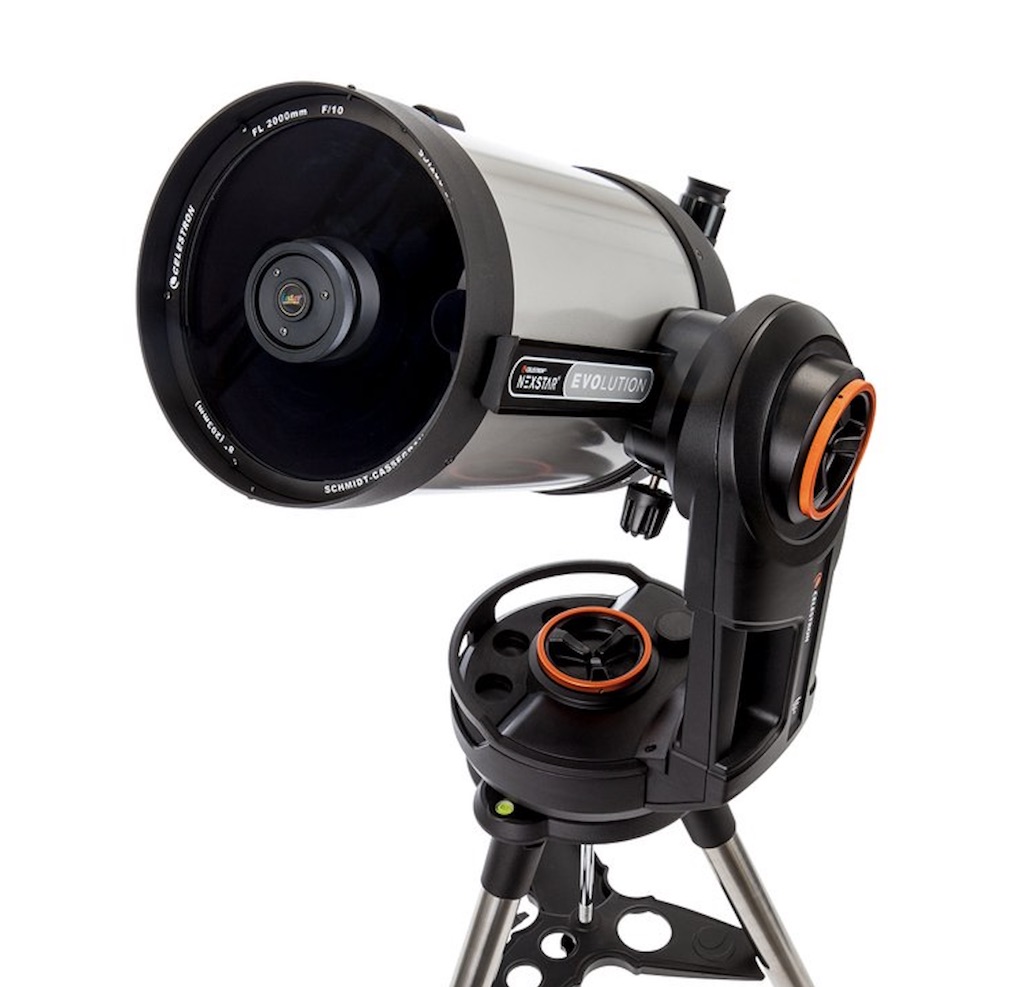
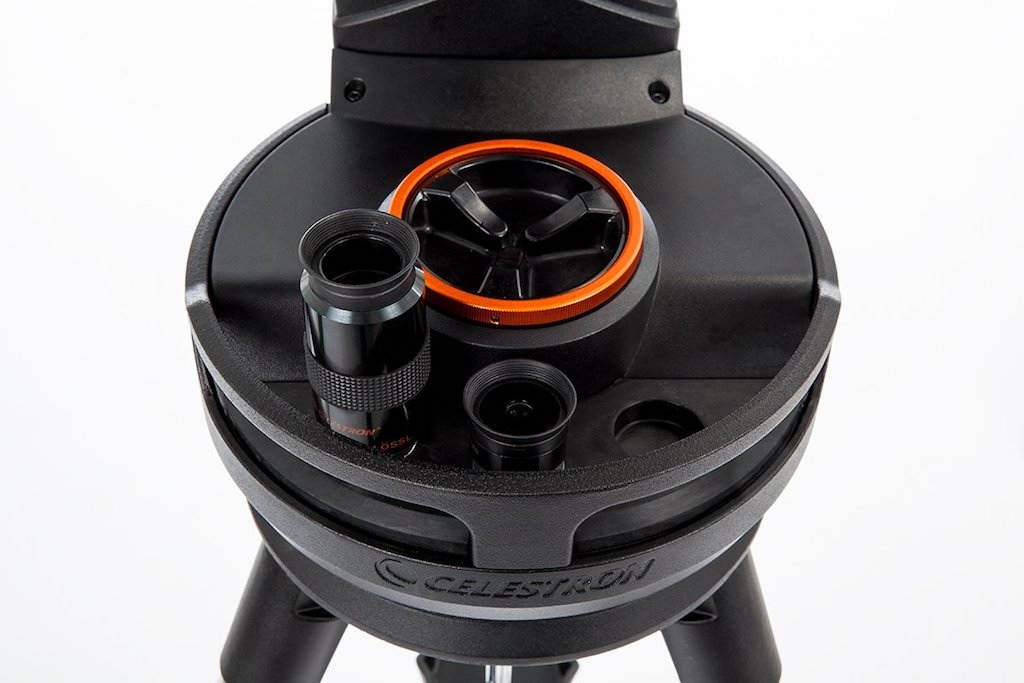
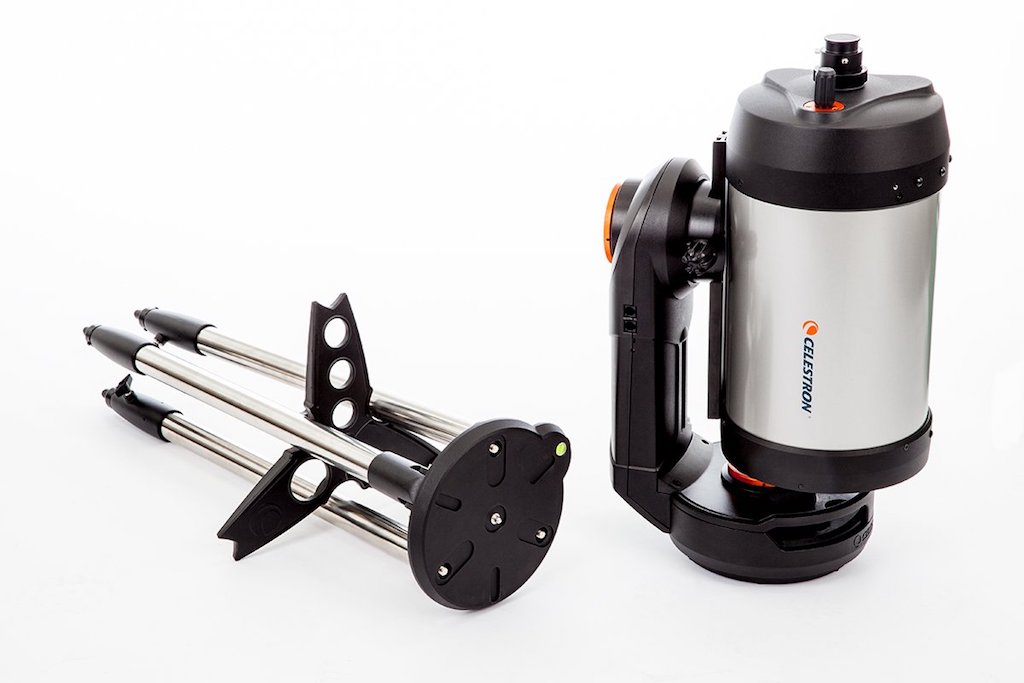
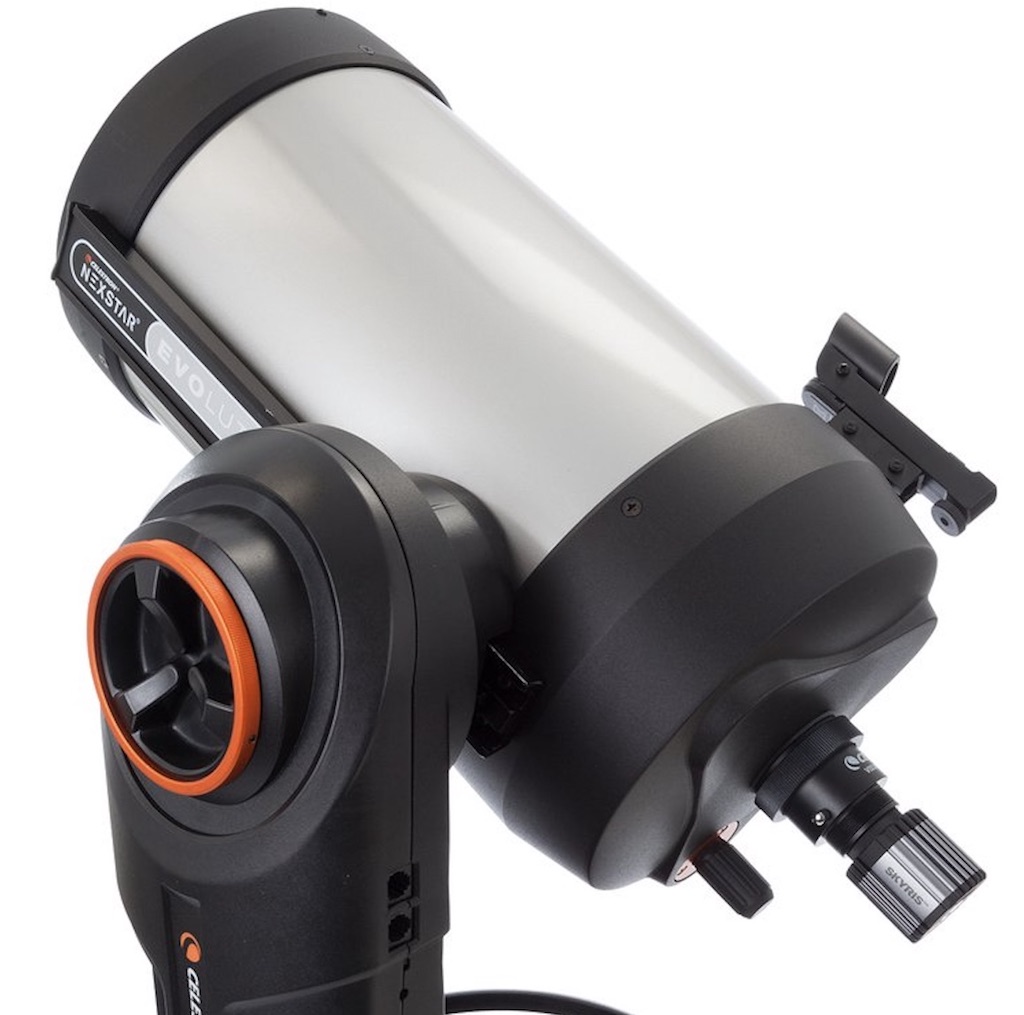
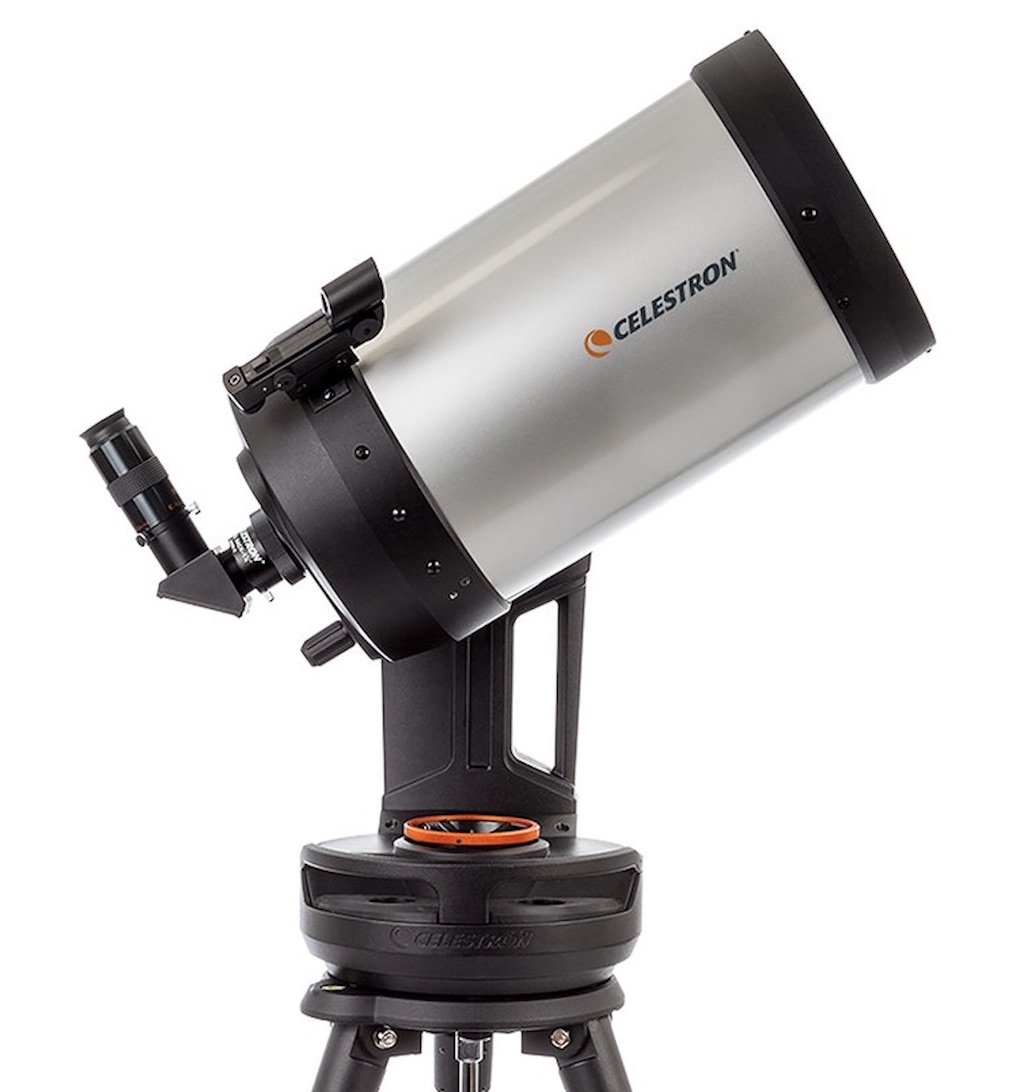
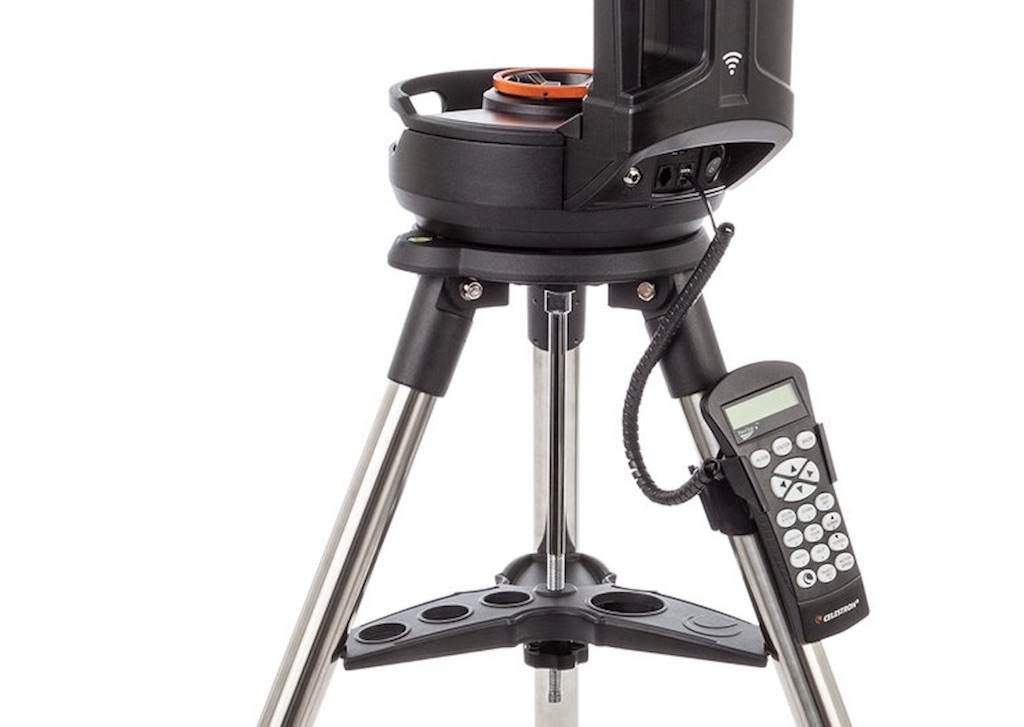
NexStar Evolution 8: First light and functionality
- Uses StarSense AutoAlign camera for easy calibration
- Alignment technology "complains" in cloudy and light-polluted areas
- High clarity and resolution in the field of view
- Needs add-on for serious, long-exposure astrophotography
Upon arrival at our designated site for the night, the assembly of the telescope proved to be fairly straightforward — something that's welcomed by any astronomer who just wants to get down to making observations straight away and without spending a great deal of time setting up.
In less than 30 minutes, the telescope was assembled, running and ready for alignment. We decided to utilize the StarSense AutoAlign camera, as it was a clear night at our location in a dark-sky reserve.
At the time of the review, using the technology was a new experience to us, but it was straightforward and didn’t take longer than your average, manual alignment. Be warned though, the technology will only work at its best under reasonably clear skies free of light pollution and with an array of stars at your disposal. Anything less and a message will pop up on the hand control that says, "Too Few Stars".
Once aligned, we couldn't wait to test the NextStar Evolution 8's mettle. Our smartphone (iPhone 11) connected to the telescope with ease and, with the interactive interface also doubling as a planetarium app, choosing our targets has never been easier. The first object on our checklist was the biggest, brightest and most obvious object visible to the naked eye — the moon.

Our lunar companion was at waxing gibbous phase at the time of observation, with 85.9% luminosity. With the 40 mm eyepiece attached, the NexStar Evolution 8 offered a crisp, bright and visually stimulating sight, with the lunar surface fitting perfectly within the field of view. We recommend purchasing a moon filter to pare down any dazzling brightness and to improve contrast for picking out detail.
Related: Moon phases
Switching to the 12.5 mm Plössl allowed us to take a closer look at the rugged lunar terrain. From the dark patches of the lunar mare, to the distinguishable craters of Tycho and Copernicus and the lunar terminator, the optics presented a crisp view with high clarity and resolution.
Moving away from the moon, we explored some deep-sky targets in Orion (the Hunter). Heading over to our winter favourite, we took the time to gaze upon stellar opposites, Rigel and Betelgeuse. The redness of the latter was easily recognisable, and the optical system seemed to have no major issues with chromatic or spherical aberration. Slewing to the opposite corner of Orion, we picked out the bluish-white hue of Rigel.
Again, there was no interference or issues with the resolution of this brilliant, 0.12-magnitude supergiant. Continuing our tour of the constellation, we tested the optical system on the more-diffuse Orion Nebula (Messier 42), which required reverting back to the 40 mm eyepiece. Even with the star-forming region's large size, the Plössl could accommodate the majority of the nebula. The central concentration of light was a magnificent sight and, when combined with the surrounding dust trails stopping the visible light in its path to Earth, there was an appreciated disparity.
As this mount is motorized, and is capable of tracking a celestial object as it moves across the sky, it's a must-try for some serious astrophotography. It is specified that the telescope can accommodate most cameras, especially larger format CCD (charge-coupled device) and DSLR cameras. However, if you are looking to improve your images, you should purchase the ‘Wedge’ for the NexStar Evolution, which enables long-exposure photography.
NexStar Evolution 8: Verdict
The Celestron NexStar Evolution 8 is an extremely impressive piece of kit. It's easy to set up and, by taking advantage of all the latest technology combined with its optical prowess, is capable of providing a complete high definition tour of the night sky.
With a price that's suited to large budgets, it's a sturdy and reliable instrument that comes with a 24-month warranty. It's a worthy investment for those who are veterans of viewing the night sky but not so much for those who are just dipping their toe into skywatching. For beginners and casual astronomers, we recommend the NexStar or Astro-Fi range of Celestron telescopes.
The NexStar Evolution 8's optical system ranks as one of the best we've ever had the pleasure of looking at the universe through. Operation of its WiFi technology is seamless, while the computerized GoTo mount boasts exceedingly high performance. The Celestron NexStar Evolution 8 can be pushed to its useful magnification of 480x without suffering the consequences of poor, blurred images.
Join our Space Forums to keep talking space on the latest missions, night sky and more! And if you have a news tip, correction or comment, let us know at: community@space.com.

Gemma currently works for the European Space Agency on content, communications and outreach, and was formerly the content director of Space.com, Live Science, science and space magazines How It Works and All About Space, history magazines All About History and History of War as well as Science, Technology, Engineering, Arts and Mathematics (STEAM) kids education brand Future Genius. She is the author of several books including "Quantum Physics in Minutes", "Haynes Owners’ Workshop Manual to the Large Hadron Collider" and "Haynes Owners’ Workshop Manual to the Milky Way". She holds a degree in physical sciences, a Master’s in astrophysics and a PhD in computational astrophysics. She was elected as a fellow of the Royal Astronomical Society in 2011. Previously, she worked for Nature's journal, Scientific Reports, and created scientific industry reports for the Institute of Physics and the British Antarctic Survey. She has covered stories and features for publications such as Physics World, Astronomy Now and Astrobiology Magazine.










